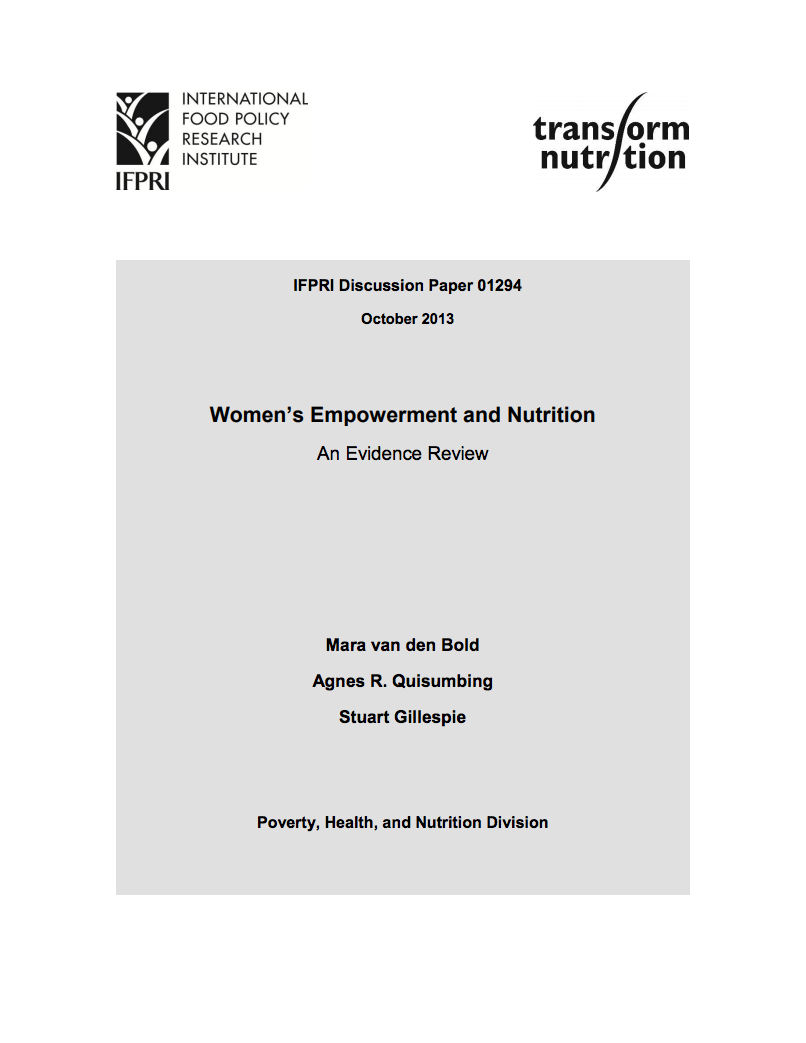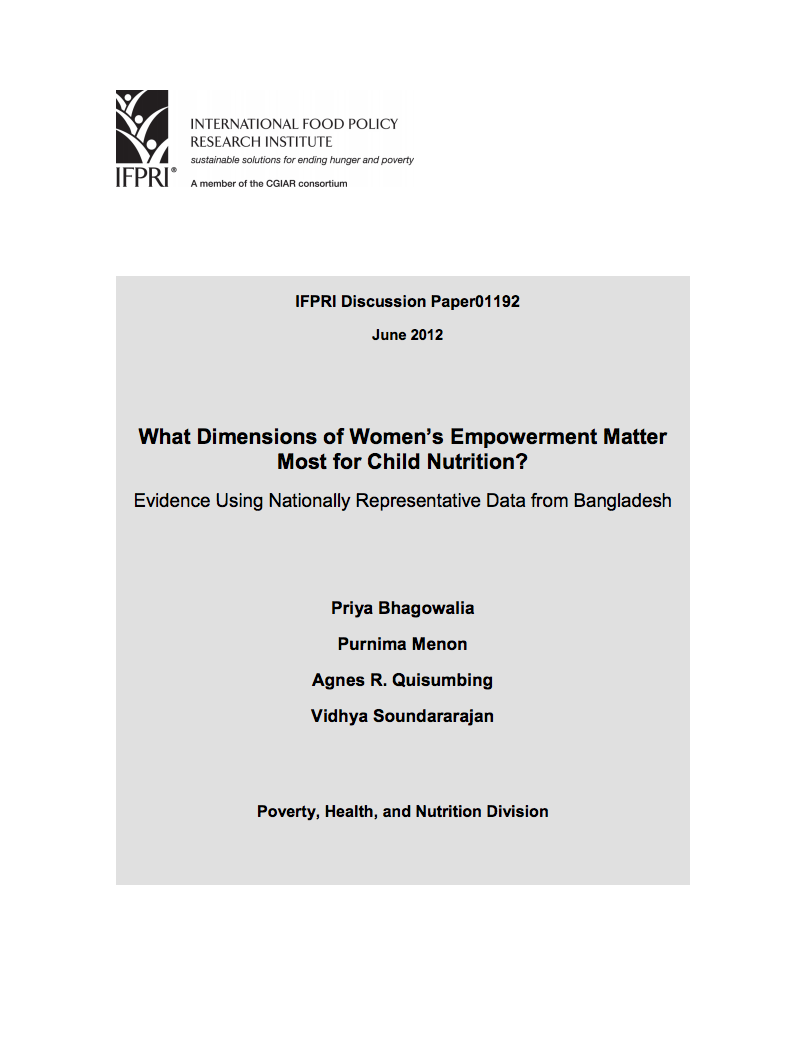Women’s empowerment and nutrition: An evidence review
This paper starts by reflecting on the concept and measurement of women’s empowerment and then reviews some of the structural interventions that aim to influence underlying gender norms in society and eradicate gender discrimination. It then proceeds to review the evidence of the impact of three types of interventions—cash transfer programs, agricultural interventions, and microfinance programs—on women’s empowerment, nutrition, or both.





